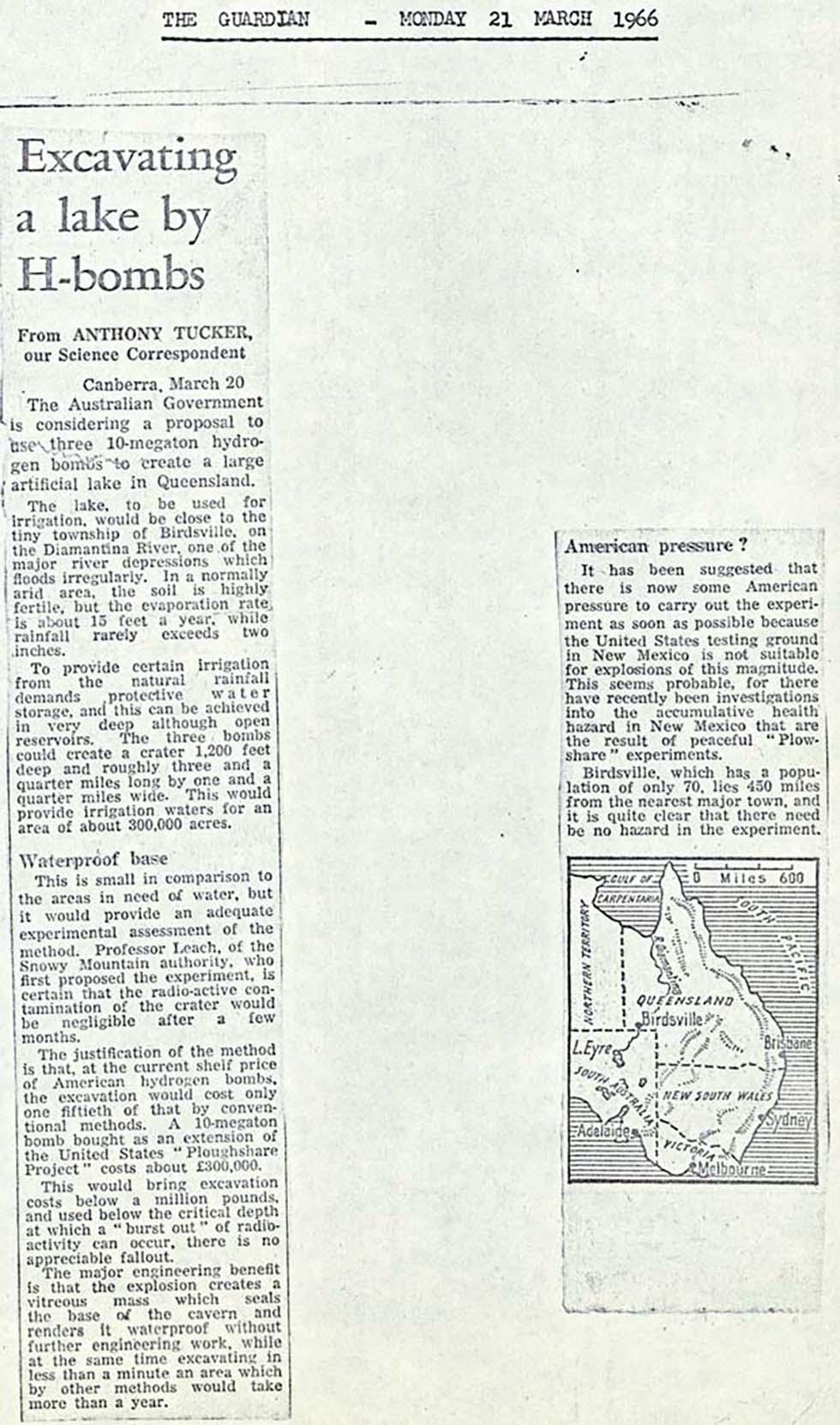


Transcript
THE GUARDIAN – MONDAY 21 MARCH 1966
[Heading:] Excavating a lake by H-bombs
From ANTHONY TUCKER, our Science Correspondent
Canberra, March 20
The Australian Government is considering a proposal to use three 10-megaton hydrogen bombs to create a large artificial lake in Queensland.
The lake, to be used for irrigation, would be close to the tiny township of Birdsville, on the Diamantina River, one of the major river depressions which floods irregularly. In a normally arid area, the soil is highly fertile, but the evaporation rate is about 15 feet a year, while rainfall rarely exceeds two inches.
To provide certain irrigation from the natural rainfall demands protective water storage, and this can be achieved in very deep although open reservoirs. The three bombs could create a crater 1,200 feet deep and roughly three and a quarter miles long by one and a quarter miles wide. This would provide irrigation waters for an area of about 300,000 acres.
[Subheading] Waterproof base
This is small in comparison to the areas in need of water, but it would provide an adequate experimental assessment of the method. Professor Leach, of the Snowy Mountain authority, who first proposed the experiment, is certain that the radio-active [sic] contamination of the crater would be negligible after a few months.
The justification of the method is that, at the current shelf price of American hydrogen bombs, the excavation would cost only one fiftieth of that by conventional methods. A 10-megaton bomb bought as an extension of the United States "Ploughshare Project" costs about £300,000.
This would bring excavation costs below a million pounds, and used below the critical depth at which a "burst out" of radioactivity can occur, there is no appreciable fallout.
The major engineering benefit is that the explosion creates a vitreous mass which seals the base of the cavern and renders it waterproof without further engineering work, while at the same time excavating in less than a minute an area which by other methods would take more than a year.
[Subheading] American pressure?
It has been suggested that there is now some American pressure to carry out the experiment as soon as possible because the United States testing ground in New Mexico is not suitable for explosions of this magnitude. This seems probably, for there have recently been investigations into the accumulative health hazard in New Mexico that are the result of peaceful "Plowshare" [sic] experiments.
Birdsville, which has a population of only 70, lies 450 miles from the nearest major town, and it is quite clear that there need be no hazard in the experiment.
[Black and white map of the eastern half of Australia, with state borders, Diamantina River, and Birdsville marked. Birdsville is close to where the Diamantina crosses from Queensland into South Australia, near the border with the Northern Territory.]
Related themes
Need help with your research?
Learn how to interpret primary sources, use our collection and more.



